Our Approach to Systems Integration
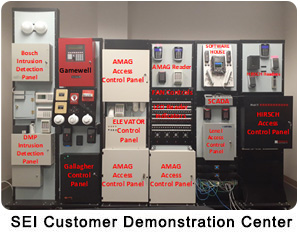 The purpose of SEI’s Demonstration/Evaluation Center is to provide a facility where advanced technology concepts can be investigated, demonstrated, displayed and evaluated prior to deployment. The elements below are key principles demonstrated in the SEI Demonstration/Evaluation Center:
The purpose of SEI’s Demonstration/Evaluation Center is to provide a facility where advanced technology concepts can be investigated, demonstrated, displayed and evaluated prior to deployment. The elements below are key principles demonstrated in the SEI Demonstration/Evaluation Center:- Virtualization
- Redundancy
- Federated Control (PSIM)
- Emerging Technology
- Data Fusion
- Common Operating Picture (Collaboration and Situational Awareness)
- High-Precision Power Quality & Energy Monitoring
Virtualization
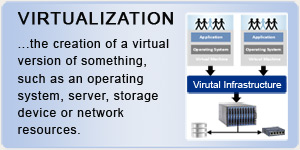 Virtualization is the creation of a virtual (rather than physical) version of something, such an operating system, a server, a storage device or network resources.
Virtualization is the creation of a virtual (rather than physical) version of something, such an operating system, a server, a storage device or network resources.- Infrastructure is what connects resources to your enterprise.
- Virtual Infrastructure is a dynamic mapping of your resources to your enterprise.
- Result: decreased costs (hardware, cooling expenses, infrastructure, space) and increase efficiencies and responsiveness
Redundancy
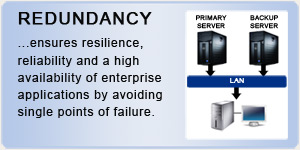 Redundancy The use of Virtualization Technology should include Redundancy to avoid a single point of failure. Redundancy provides resilience (to cope with failures and errors). Redundancy ensures reliability and a high availability of enterprise applications. The benefits of redundancy:
Redundancy The use of Virtualization Technology should include Redundancy to avoid a single point of failure. Redundancy provides resilience (to cope with failures and errors). Redundancy ensures reliability and a high availability of enterprise applications. The benefits of redundancy:- Reduced single point of failure
- Ensures Reliability
- Enhances high availability of enterprise applications
Federated Control
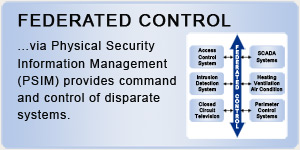 Federated Control via Physical Security Information Management (PSIM) provides command and control of disparate systems. Federated Control provides the followings benefits:
Federated Control via Physical Security Information Management (PSIM) provides command and control of disparate systems. Federated Control provides the followings benefits:- Single Sign-on
- Minimizes Risk
- Reduce Operational Cost
- Leverages and extends existing systems
- Improves response time
- Enables compliance
Common Operating Picture
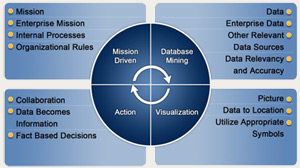 Common Operating Picture (COP) can be defined as a single identical display of relevant operational information. The benefits of a COP:
Common Operating Picture (COP) can be defined as a single identical display of relevant operational information. The benefits of a COP:- Facilitates collaborative planning
- Enhances situational awareness
- Promotes better decisions
- Enables new levels of productivity and efficiency in critical operations.
Emerging Technologies
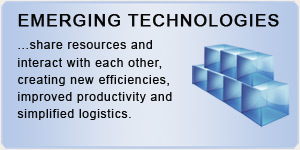 Emerging Technologies are contemporary advances and innovations in various fields of computer technology. Emerging technology now share resources and interact with each other, creating new efficiencies. Benefits of emerging technologies:
Emerging Technologies are contemporary advances and innovations in various fields of computer technology. Emerging technology now share resources and interact with each other, creating new efficiencies. Benefits of emerging technologies:- Shared resources
- Improved productivity
- Simplified logistics
- Open System Architecture
Data Fusion
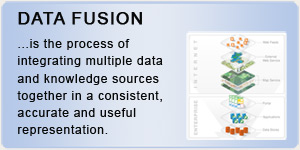 Data Fusion is the process of integration of multiple data and knowledge representing a given topic or interest consistently and accurately in a useful representation. In the geospatial (GIS) domain, data fusion is often synonymous with data integration. In these applications, data sources are combine such that all of the data points and time steps are referenced to point on the Earth. The fused data contain attributes and metadata which might not have been included for these points in the original data set.
Data Fusion is the process of integration of multiple data and knowledge representing a given topic or interest consistently and accurately in a useful representation. In the geospatial (GIS) domain, data fusion is often synonymous with data integration. In these applications, data sources are combine such that all of the data points and time steps are referenced to point on the Earth. The fused data contain attributes and metadata which might not have been included for these points in the original data set.Visual Fusion is data visualization that unites data from virtually any data source in a visual, interactive context for better insight and understanding.
Visual Fusion connects all of your data in a single view, putting it in greater context and enabling you to interact with it more effectively. Whether you need a quick mash-up or a sophisticated custom application, Visual Fusion makes your data more accessible, understandable, and actionable.
Through interactive maps, timelines, data lists, and charts, your data is illuminated in the full context of all relevant data sources. You can slice-and-dice, filter, explore, search, compare and take action.
Modular Building Concept
SEI is a system integrator. SEI uses the Modular Building Concept (MBC) approach to system integration. MBC is a standardization and packaging approach, which is independent of specific systems or mission equipment. The primary objective is to implement and later retrofit when necessary, a wide range of electronic systems directly, easily, and economically, from a compatible set of standardized functional elements or modules. The standardization is primarily the use of standard Commercial Off-The-Shelf (COTS) software and equipment. This concept can be used to implement remote monitoring and control of modules and the component standardization will facilitate assembly, check out, and later retrofit of entire systems.
Mission Driven System Integration (MDSI)
The Modular Building Concept (MBC) uses the MDSI Process. The MDSI Process is focused on the Customer Requirements. MDSI is not a product, MDSI is a series of COTS products integrated to achieve customer driven requirements.
